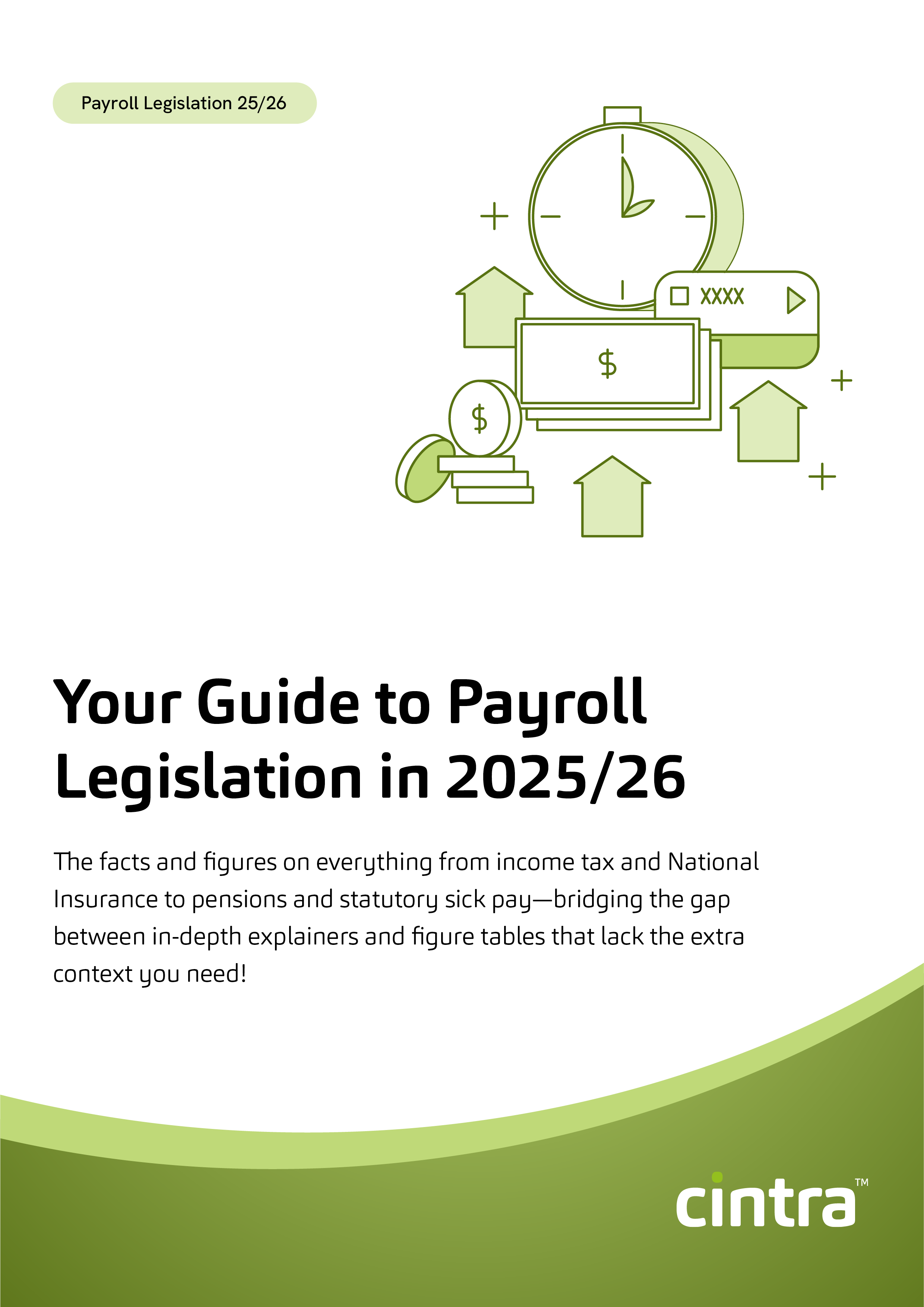Running a payroll requires a great deal of administration – duties that can distract from business-critical matters and the day-to-day responsibilities of running and growing a company. A distaste for paperwork is no justification to cut corners. If your business is hoping to attract the best and brightest potential employees, you’ll need to meet certain expectations, and that includes always paying your employees accurately and on time amongst other things. The good news is a solution exists to save you a great deal of time and reduce administrative duties. Automated payroll and HR software such as Cintra SaaS enables you to manage your payroll and HR in-house, ensuring accuracy, efficiency and compliance every step of the way.
What is Payroll & HR software?
Running a payroll can be complex. A fully integrated payroll and HR software gives you everything you need in one place, streamlining tasks and maximising efficiency. When choosing a payroll software you will need to decide what features are must-haves and which are beneficial add-ons. Some of the tools available through payroll and HR software include:
- Payment of salaries to employees on a scheduled pay date
- Reports and logs of pension contributions
- Full compliance with HMRC to ensure your business does not fall foul of adjustments to tax law
- Recording of personal holiday and sick days
- Automated generation of policies and documents, including contracts of employment
- Timesheet recordings, for businesses that operate an hourly billing model
Software vs. solutions vs. systems – what’s the difference?
First thing’s first – we need to discuss the difference between software, solutions and systems.
- Software is the generic term for a coded piece of software that releases scheduled payments and records data when instructed
- Solutions are a combination of software and external resources to ensure the smooth running of a business. This may involve external hires
- Systems are the many and varied applications that can be applied to automated HR or payroll software
Take a look at the table below to review the pros and cons of each of these approaches:
| Pros | Cons | |
| Software | Full internal control Easy amendments |
Liability for errors Training required Subscription fees |
| Solutions | Expert assistance Limited internal involvement |
Potentially expensive |
| Systems | Limitless options On-the-spot reporting available |
Additional expense |
If you are reading this article, you have likely expressed an interest in payroll and HR software. This opens up a new question. Should you look into independent payroll or HR software, or a program that offers both services in one?
To answer this, let’s ensure you understand the difference between payroll and HR. The former is almost exclusively concerned with releasing a salary to an employee on a contracted date and withholding any income and social security taxes. Most payroll software packages will also file your annual company tax return with HMRC.
HR software, meanwhile, is responsible for capturing matters pertaining to the employee, including their holiday schedule and sickness record. HR software can utilise formulas such as the Bradford Factor to determine any suspicious patterns of sickness (such a regular sickness on Mondays or Fridays). This alerts a business owner of any potential concerns surrounding an employee’s attendance record.
With this in mind …
- Payroll software ensures that your employees are paid on time, while also ensuring that your accounts remain compliant with HMRC regulations. No business benefits from a tax audit!
- HR software documents the attendance of employees – minimising the risk of multiple key staff members being on holiday simultaneously, for example, or flagging up patterns of sickness – while also generating key documents and running reports if requested
- Payroll and HR software takes care of both services in one. This makes payroll and HR software a worthwhile investment, as it removes a significant administrative burden
At Cintra, we offer fully integrated payroll and HR software which enables you to control everything in one user-friendly system.
Payroll & HR software features – what to look out for:
As an employer you will have statutory requirements that you need your payroll to be able to facilitate, for example:
- Recording employees’ details
- Working out your employees’ pay and deductions
- Reporting payroll information to HMRC
- Working out how much you need to pay HMRC
- Calculating statutory pay e.g., maternity or sick pay
- Producing payslips
- Recording pension deductions
- Making pension payments
- Paying different people over different periods (for example both weekly and monthly)
- Sending an Employer Payment Summary (EPS) report or Earlier Year Update (EYU) to HMRC
- Do you want employee self-service?
Functionality usually comes at a cost, so having a clear idea of what you want from the outset will help you to evaluate the options available and the best value and fit for your budget.
As with all software, payroll and HR solutions typically come in two forms.
- Local software, typically purchased for a one-off cost and located on a computer hard drive
- Cloud-based software, leased from a provider and hosted online
Payroll & HR software for small business vs. large enterprise vs. public sector/education sector
The payroll and HR software package that you choose should be tailored to the needs of a business. For example, a small business can likely choose a more basic package tailored to a handful of employees. A large, global enterprise will likely need a more elaborate offering.
Things to consider when choosing your HR and payroll software package include:
- How many user licenses will you need? A small business can keep the costs down with just one. A larger company will likely need several
- How user-friendly is the interface? The more basic and intuitive the software, the less time you will need to spend training staff on how to use it – and the less likely user errors become through misunderstandings
- How simple is it to make changes to the software records? In a large enterprise, in particular, salaries and benefits packages are likely to fluctuate regularly
- Do you need performance tracking built into the HR aspect of the software? Again, a small business will likely have a clear idea of how staff are performing. A larger company may rely on automated methodology, especially if bonus payments are reliant on workplace achievements
Learn what each potential software package you encounter offers, and make your choice based on what you need. There is little to gain for an SME paying for a large-scale package designed for the public sector, packed with bells and whistles that will never be used. Equally, though, a large company attempting to save money by picking up a smaller-scale software package may quickly find that it cannot meet their complex needs.
Take our short quiz below and we can advise you on which payroll & HR solution may suit you best:
[contact-form-7 id=”9169″ title=”Multi-step form 1″ html_class=”quiz”]
Pricing – how much does it cost?
The price point for payroll and HR software varies between suppliers. All manufacturers will have unique price points. A universal truth is that the more features are included in the package, however, the higher the cost is likely to be.
Also, be aware that most suppliers charge by the number of employees serviced by the software. This means that costs will be directly linked to how many employees you have on your payroll. Reputable HR and payroll software suppliers, such as Cintra HR & Payroll Services will offer you a no-obligation quote and a free demonstration of their services.
Now, here’s something else you may be wondering – is there really a need to pay for HR and payroll software at all? Are there any free packages out there?
The short answer to this is yes. However, be aware that you get what you pay for. Utilising free software may save your business money, at least in the short term, but think about what you’ll be giving up. You’re unlikely to experience the following from free software.
- Dedicated, reliable customer support in the event of a problem
- Reliable security measures to protect your staff data, much of which will be sensitive. Home addresses, national insurance numbers and bank account information will all be stored within the software
- Protection from errors and glitches in reporting, which can lead to inaccurate payments and disillusioned staff
Investing in Payroll and HR software which does all of the above is worthwhile, however when making such a financial investment it’s important to make sure that there are no hidden extras. How are the charges broken down? Some companies require an initial investment outlay, whereas some offer no up-front costs by rolling the implementation costs into the price per pay slip. At Cintra, our pricing structure is clear, simple and comprehensive. There are no hidden surprises or additional costs. We also offer the ability to implement your new system with no up-front CAPEX investment.
Choosing the right software for you
By now, you should have an idea of how to choose the best HR and payroll software for the unique needs of your business. As a reminder, you should seek a software package that meets the following criteria:
- User-friendly operation to minimise time lost learning how to use the software
- The ability to log holiday, sickness and other HR data so you can manage this
- Superior security features to protect the private information of your employees
- Excellent customer service, so any issues are rapidly identified and resolved
- A reliable and trustworthy track record of meeting the needs of clients
At Cintra HR & Payroll Services, we offer all of the above and much more. If you would like to find out more about what we offer, get in touch via the link below:


